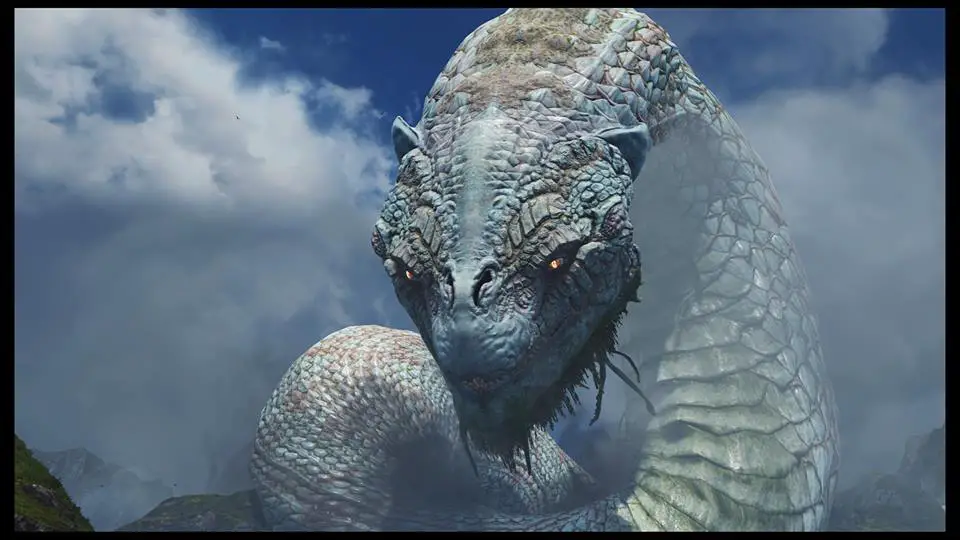E3’s conferences have come and dazzled us with shiny new games, gameplay trailers, and a whole host of hopes and dreams on which to pin our little gamer hearts and budgets. While I try to figure out how I’m going to afford the first few months of 2019, it’s also a good time to keep in mind all of the things that make video games good. There are the obvious things — story, graphics, art, not making us wait a million years in loading scenes, and the ability to hop over a knee-high fence — and then there are the little things that set a game apart and take it from a good use of 60 bucks to Game of the Year material.
Photo Mode
If there’s one constant in games, it’s that the art keeps getting prettier and prettier. Whether you’re going for photorealism or a Disney-esque art style (hi, Kingdom Hearts!), we spend a lot of time looking at video games and devs spend a lot of time giving us something good to look at. Whether you’re a sucker for stunning landscapes or like to laugh at the pretzel positions the bodies of your dead enemies land in, sometimes you just have to take a picture so you can remember your journey (or to share and amuse your friends). Photo mode can be simple (removing the HUD) or complicated. Horizon Zero Dawn photo mode not only stripped the HUD, it gave you the ability to change the time of day, move around the camera, remove Aloy or put her in silly poses, and even slap on borders and cheesy postcard greetings. Assassin’s Creed: Origins lets you turn a murder adventure into full-blown tourism.
New Game Plus, and Other Replayability Mechanics
Even if you’re a casual gamer, we all sink a fair amount of cash into games. Some of those games are silly, some are thrilling, and some hit us right in the feels. The good games, the really well-made ones, are experiences that sit with us for a long time and make us yearn to relive them. Of course, you can never really go home but with functions like new game plus, you can certainly try. Whether you’re the kind of person who likes to torture themselves with tragedy, explore every skill and dialogue tree, or go evil overlord instead of virtuous savior, replayability is a huge factor in video games. A good new game plus can add more challenges, higher difficulty, and can help you relive all those moments that made you fall in love in the first place.
Silly Side Quests
Not all games are scripted equally. Some are the height of absurdity, and some are super serious. Whether you’re playing Saint’s Row or Assassin’s Creed, every game needs a side quest that is the best kind of stupid to break up the tension. In The Witcher 3: The Wild Hunt Geralt had to get hammered to attract a demon that only goes after drunk people. In Assassin’s Creed: Origins, Bayek rescues a lipstick-covered balding guy, who, totally drunk, fell prey to a scam (and almost got eaten by a pack of crocodiles). The mission in Skyrim that is effectively the plot of The Hangover is much beloved, as are half of the side quests in Borderlands 2. Side quests can be grindy, fetch quests are obnoxious, and escort missions make me want to play something else. But a quest that pays me to kill myself, or murder dwarves in a giant smashing machine in order to steal their beards (or any quest in which I get drunk and then have to do mechanics with drunk camera happening) is a thing of beauty.
Joke Weapons

Borderlands 2 has a shotgun that shoots swords. Dragon Age: Inquisition has the banana nailed to a stick. Dead Space 2 has a finger gun, and Gears of War 3 has the chicken-firing Cluckshot. Mr. Toots, the rainbow-farting unicorn from Red Faction: Armageddon, is hard to beat. Then there’s The Penetrator from Saints Row 3. Joke weapons might take you out of the seriousness of saving the universe from evil aliens, but by George, it does make for a good time.
Minigames Done Right
I loved Ni No Kuni 2. It’s a happy game, where instead of murdering one bad guy after another you save the day with the power of friendship and forgiveness.
And minigames. Lots of minigames.
For me, Ni No Kuni 2 is the perfect example of minigames done right — and minigames done wrong. The kingdom building stuff was great; the battle system that forced you to listen to Evan shouting the same three phases over and over was not. Good minigames, whether it’s a casino filled with chocobo racing or slot machines that occasionally spit out dynamite, give you a break from the adventuring, murdering, and saving the world. They give you a chance to come up for air, win an elite weapon, earn a trophy, and otherwise have a little fun. Bad minigames force you to learn complicated rules for a card game in order to move the plot forward.
Fast Travel, and Other Reductions in Time Waste
We spend a lot of time in games, and if you play Skyrim you spend a lot of time in load menus. As games get bigger, with more stuff to do and more land to traverse, anything that saves time is an essential mechanic. Fast travel is the most prominent of these time-saving mechanics, while other games give you things to do during your trek across the planet. Assassin’s Creed: Origins lets you scout out the upcoming territory with your bird friend, and Horizon Zero Dawn lets you gather mats while mounted. God of War tries to hide loading screens by having Kratos stroll around in circles getting lessons on Nordic mythology from your handy companion. If the internet is to be believed, we’re all getting a little more ADD. It’s nice to have a game give us something to twiddle away load times, even if it cuts into my Reddit time.
Deep Lore

A good game has a story that’s engrossing. A great game delves so far into its own lore that it has us donning tinfoil hats and swearing that Dragon Age’s Flemeth is secretly Andraste. One of God of War’s greatest elements is how deep Mimir takes us into the lives of the gods. A person could spend a lifetime digging through the lore of The Elder Scrolls. Every replay unveils something new, and when you’re between games it gives you something to obsessively Google, or the ability to torture your friends with obscure Mario Bros trivia. Deep lore speaks to good world building, which speaks to immersive gameplay. It’s all about falling down a game’s rabbit hole so deep you never want to come back out.
DLC that Counts
When it comes to video games, there’s so much extra crap to spend your money on that sometimes it’s hard to decide between a season pass and a new Amiibo. There’s nothing quite as annoying as purchasing an add-on only to find out it’s stupid and shallow and a waste of money. Nobody wants to feel like they’re being milked for every dollar they have. An add-on, especially one that costs real money, should add something to the game: a new element of gameplay, more story, more character development. DLC that lets you bond with your team, like Mass Effect’s Citadel DLC, or brings a nice tidy end to the story, like Dragon Age’s Trespasser, or lets you check in on your favorite characters and make sure they’re doing okay after the big events of a game like Borderlands 2’s Tiny Tina’s Assault on Dragon Keep, is exactly what DLC should be.
The Ability to Destroy Your Friends
Co-op is fun, but sometimes the best time is defeating your friends so badly someone rage quits and swears they’ll never play Mario Kart ever again. You know your friends are good at games — after all, you’ve teamed up for some wholesome player killing in everything from Overwatch to Fortnite’s Battle Royale. But there’s something very sweet about proving you are better than the people you play with the most. Besides, a friendship that can’t survive Mario Party is no friendship at all.
Customization
I’m a girl. I like to dress my characters in pink. I also like shotguns and grenades. If I can put my character in a pink outfit, preferably with a unicorn of some sort, while lobbing hand grenades at mobs and running in Leeroy Jenkins style so I can shotgun people in the face, I’m happy. This paragraph might be a complete explanation of why Borderlands 2 is one of my favorite games, but it’s also a good example of why customization is important. Skill trees that play to my strengths, dialogue trees that allow me to make snappy comebacks, renegade interrupts that let me headbutt jerks, outfit choices, weapon types, dodging vs blocking, a character creator that takes hours to get right, these things all let you play games the way you want, in a way that makes you happy.
And that’s what it’s all about, right? Spending your time and your money on the things that make you happy. Playing games that make you laugh, or scream, or wish you could erase your memory of it entirely so you can do the whole thing over again. That’s a great game.

